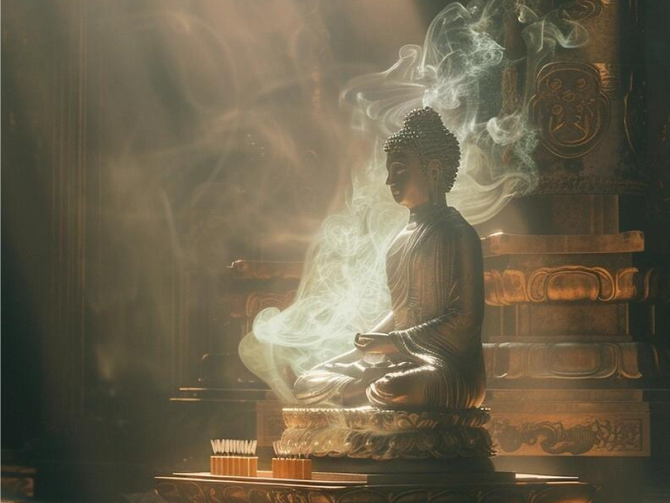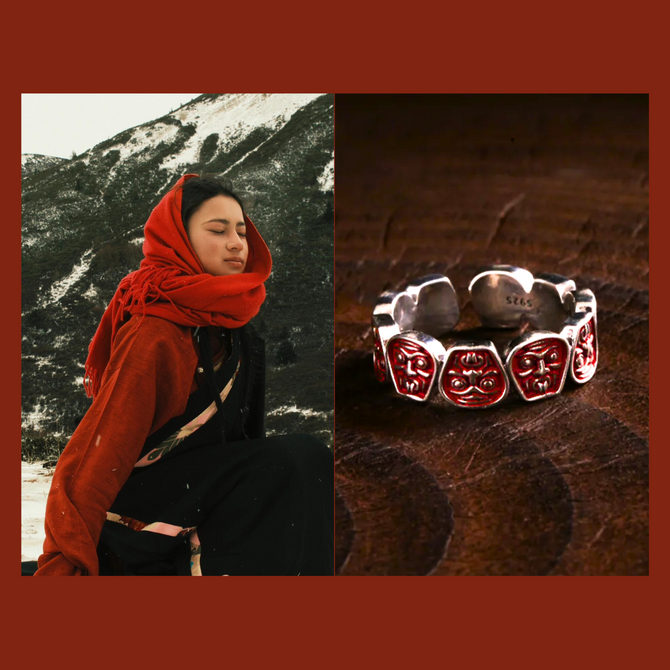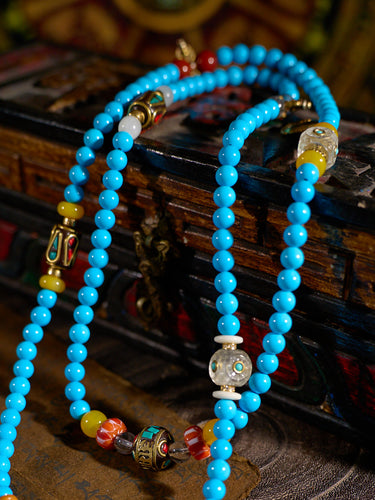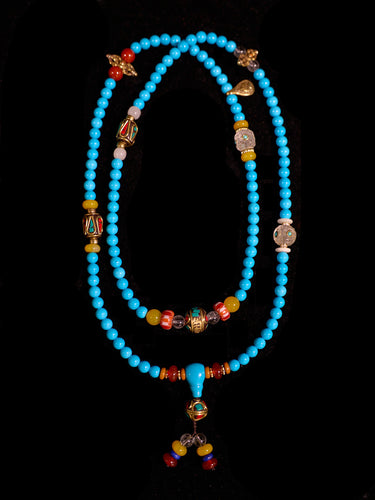
In the realm of Oriental art, few pieces capture the essence of spirituality and artistic excellence as profoundly as the Three Western Saints Buddha Statue. This magnificent work not only epitomizes the intricate craftsmanship of oriental artists but also symbolizes a confluence of cultural and religious ideologies.
Understanding the Symbolism of the Three Western Saints
Exploring the symbolism of the Three Western Saints Buddha Statue, we witness not only its artistic excellence but also its profound impact on cultural and religious levels. This statue, featuring the trinity , Amitabha, Avalokiteshvara, and Mahasthamaprapta, forms a deeply meaningful religious symbolic system.
Amitabha, known as the Buddha of Infinite Light, symbolizes boundless compassion and wisdom. In Buddhism, he reigns over the Western Paradise, the Pure Land, promising to welcome all beings who believe in him to this realm of bliss. Avalokiteshvara, embodying compassion, is often depicted with multiple arms and heads, representing his immense ability to alleviate suffering in the world, hearing all cries of distress and offering help. Mahasthamaprapta represents the power of wisdom, aiding followers in understanding and practicing the teachings of Buddhism to achieve enlightenment.
The artistic representation of these figures is also remarkable. Taking the "Yongtai Temple Triad" from the Tang Dynasty as an example, these statues, made of gilded bronze, showcase the exquisite craftsmanship typical of Tang Dynasty Buddhist art. They reflect a profound understanding of Buddhist teachings and artistic achievements of the era. These statues are not just symbols of religious belief but also the essence of ancient Chinese culture and art, still highly esteemed by collectors and art enthusiasts around the world.
The Artistry Behind the Statue
The artistry behind the Three Western Saints Buddha Statue is a testament to the extraordinary skill and profound spiritual insight of oriental artisans. This statue, a marvel of artistic achievement, showcases a level of craftsmanship that is deeply rooted in the rich traditions of Eastern artistry.
Crafted with meticulous attention to detail, each aspect of the statue reflects a harmonious blend of form and symbolism. The artisans who created this masterpiece employed traditional techniques passed down through generations, ensuring that every element from the serene expressions of the deities to the intricate patterns of their robes was rendered with utmost precision and reverence. The choice of materials is equally significant. Often utilizing bronze or wood, materials that are both durable and spiritually resonant in Eastern cultures, the statue is a tangible representation of the divine.Moreover, the coloring techniques used in such statues are noteworthy. Employing a sophisticated palette that ranges from subtle earth tones to vibrant hues, these colors are not only visually striking but also carry symbolic meanings. Gold, frequently used in such statues, signifies purity and enlightenment, adding a layer of spiritual depth to the piece.
A great example of this craftsmanship is evident in the historical artifacts found in the Mogao Caves, where statues of similar style and era exhibit an exquisite level of detail and artistry. These caves, a treasure trove of Buddhist art, provide context to the high standards of craftsmanship that were prevalent in the creation of religious statues like the Three Western Saints.In essence, the artistry behind the Three Western Saints Buddha Statue is a profound expression of both artistic talent and spiritual devotion, embodying the timeless beauty and depth of oriental art.
A Cultural Fusion
The Three Western Saints Buddha Statue stands as a remarkable symbol of cultural fusion, bridging the gap between Eastern and Western philosophies. Its roots are deeply entrenched in Oriental traditions, yet it resonates powerfully with Western audiences. This unique blend of cultures is embodied in the statue's depiction of universal themes—compassion, wisdom, and enlightenment. These themes, fundamental to human experience, transcend geographical and cultural boundaries, making the statue a globally revered artifact.
The statue's appeal to a diverse audience can be attributed to its amalgamation of artistic styles and spiritual ideologies. In the East, it is revered for its adherence to traditional Buddhist iconography, while in the West, its aesthetic appeal and philosophical depth are greatly appreciated. This cultural interplay not only enhances the statue's artistic value but also promotes a deeper understanding and appreciation of Eastern philosophies in Western societies.Moreover, the statue’s symbolism extends beyond religious connotations, embodying a message of unity and interconnectedness. Its representation of the Three Western Saints, each embodying different virtues, serves as a metaphor for the integration of diverse beliefs and values. This aspect of the statue makes it particularly relevant in multicultural contexts, where it is seen as an emblem of inclusivity and mutual respect.
The Statue in Modern Context
In the contemporary world, dominated by news of chaos and conflict, the Three Western Saints Buddha Statue emerges as a beacon of peace and harmony. It stands as a gentle reminder of the enduring values of compassion and understanding, fostering a sense of hope and resilience in the face of adversity. The statue encourages a dialogue between different cultures and philosophies, promoting a world view that values diversity and seeks common ground.
This dialogue is more crucial now than ever. In a globalized world, where cultural intersections are commonplace, the statue serves as a visual representation of the possibility of harmony and understanding across diverse cultural landscapes. It symbolizes the potential for a more empathetic and interconnected world, where different traditions can coexist and enrich each other. The Three Western Saints Buddha Statue, thus, is not just an artifact of religious significance; it is a symbol of the unifying power of art and the universal quest for peace and enlightenment.
In conclusion, the Three Western Saints Buddha Statue is more than just a remarkable piece of art. It is a symbol of the rich cultural tapestry that Oriental Aesthetics is committed to preserving and promoting. Our philosophy is rooted in respect for tradition, passion for art, and a desire to bridge cultural divides. As custodians of oriental art, we invite you to join us in celebrating and preserving these treasures of humanity.
























